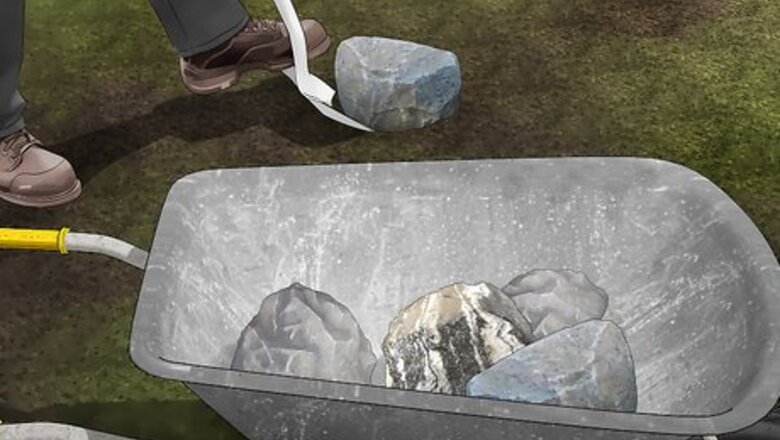
views
Excavating the Pond
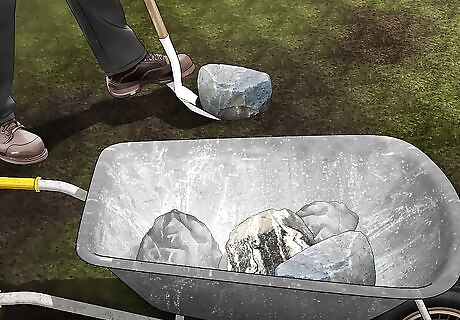
Clear the area where your pond will go. Remove any rocks and debris with a wheelbarrow. Completely uproot any trees or bushes that are near where the sides of the pond will be so that the roots won’t grow through the sides of the pond. You should check the construction plans for your house or contact the civil authorities to make sure there are no utility lines in the area where you want your pond. The ideal spot for a pond is on level land and away from trees or bushes.
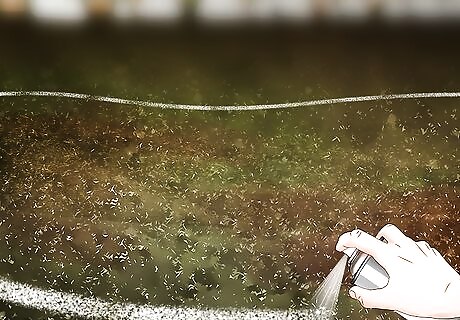
Make an outline of the shape of the pond with marking paint or a rope. Mark the outline with a spray can or squeeze bottle of marking paint. Use a rope or cord of some kind to outline the pond if you don’t have marking paint. The size of your pond is completely up to you, just keep in mind that the bigger it is, the more work it will be to excavate and pour the concrete. If you have rocky soil, the excavation can be a little tough. You may need to use a jackhammer or hire a crew to excavate the soil for you. If you plan to swim, then a pond that is 25–30 ft (7.6–9.1 m) long by 10 ft (3.0 m) wide is a suitable size, although smaller ponds work as well if you just want something to plunge in. A fish pond, such as a koi pond, should be about 12 ft (3.7 m) by 10 ft (3.0 m) to hold up to 10 adult fish.
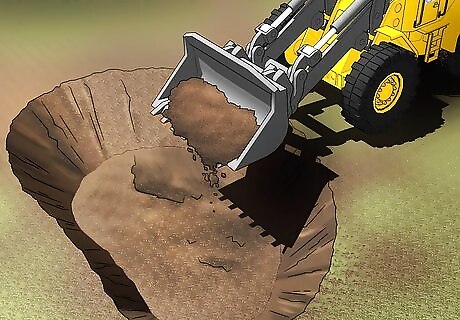
Dig the pond out with a shovel or a front-end loader to the desired depth. You will be able to excavate small-scale ponds using a wheelbarrow and a shovel. Hire a tractor driver with a front-end loader to excavate the pond if it is too large for you to excavate by hand. 5 ft (1.5 m) is a good depth if you are planning on swimming in your pond and want to be able to jump in. A good size for a pond that you could dig out yourself would be 5 ft (1.5 m) by 8 ft (2.4 m), and 2 ft (0.61 m) deep.
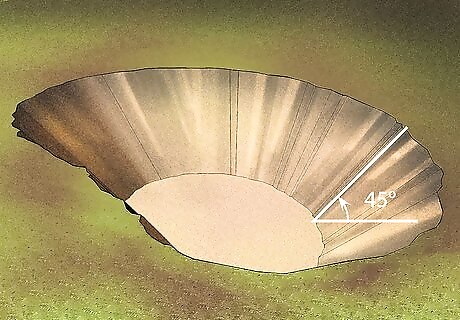
Slope the sides at a 45-degree angle. Use a shovel or front-end loader to dig out the sides until they are at approximately a 45-degree angle. This angle will make it easiest to cover the sides in concrete. Make sure to remove any loose dirt from the bottom of the pool and pack down the soil with your shovel or front-end loader when you are finished excavating and sloping the sides.
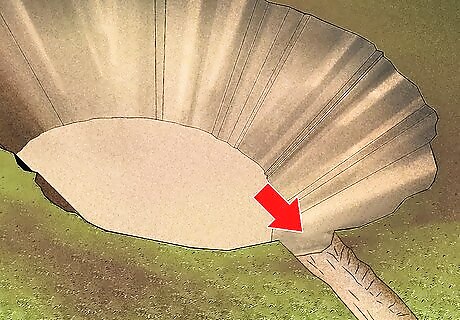
Dig a spillway 4–6 in (10–15 cm) below the ponds lowest edge. Find which way the pond naturally slopes. Use a shovel to dig a channel 4–6 in (10–15 cm) deep, 6–8 in (15–20 cm) wide, and at least 2 ft (0.61 m) long leading away from the side of the pond. Place a level around the sides to find the biggest slope if it is not obvious to the eye. Dig the channel towards a garden or plants to use water that drains from your pond to irrigate your property. You can line the earthen channel with river rocks to add visual appeal and so that you can walk over it.
Pouring the Concrete
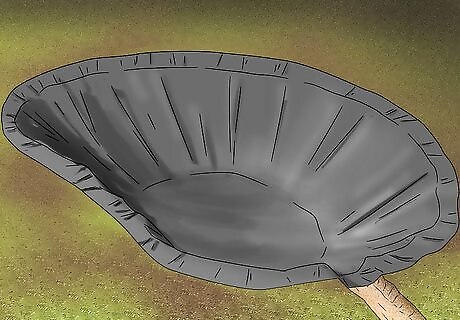
Line the pond with heavy-gauge polythene sheet. Use a plastic liner that is 0.75 mm (0.029 in) to 1.00 mm (0.039 in) thick. Cover the entire sides and base of the pond with the liner. Double the depth of your pond and add this number to the length and width of the pond to determine the length and width of liner that you need. For example, if your pond is 10 ft (3.0 m) by 10 ft (3.0 m), and 2 ft (0.61 m) deep, then you need a piece of plastic that is 14 ft (4.3 m) by 14 ft (4.3 m). The plastic will act as a moisture barrier, as well as provide something for the concrete to grab onto.
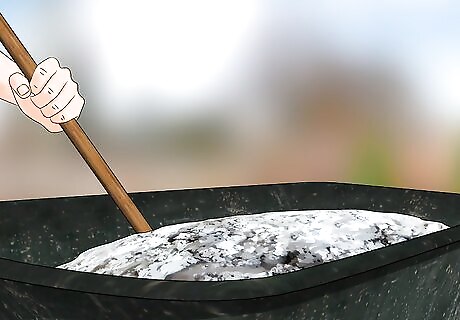
Mix concrete in an electric mixer following the concrete package’s instructions. Turn on your electric mixer and pour in the correct ratio of concrete to water. Wait until it is thoroughly mixed and there are no dry spots to start pouring it. You can use an online concrete calculator to enter the dimensions of your pond and the thickness of the concrete you want to pour to determine how many bags of concrete you will need to complete the project. The type of electric concrete mixer to use is a small drum on wheels that tilts back and forth on an axis. When you plug it in and turn it on, the drum rotates to mix the concrete together. If you don’t have an electric mixer, or your pond is very small and you don’t need a lot of concrete, then you can mix the concrete in a wheelbarrow with a shovel.
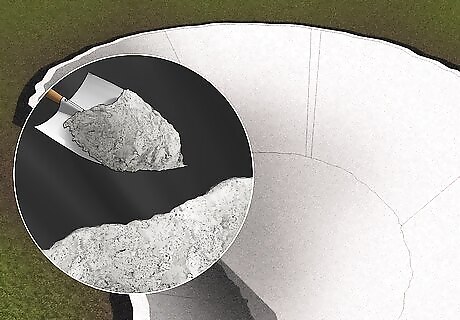
Cover the sides and base with 4 in (10 cm) of concrete. Start with one side of the pond and work your way around. Pour the mixed concrete onto the sides and base and even it out with a shovel until there is a 4 in (10 cm) layer covering all sides. Make sure that the concrete is not too watery or it will run down the sides of the pond when you pour it on them. If you notice this happening, then reduce the amount of the water in the mix. You can spread the concrete out with a long rake with tape over the tips so that you don’t have to get into the pond to spread it. If your pond is too deep to reach the bottom with a rake or shovel, then carry buckets of concrete down to the bottom. Start at one end of the pond, and spread the concrete out evenly with a shovel or rake, working backwards, until you reach the other end and have covered the entire bottom.
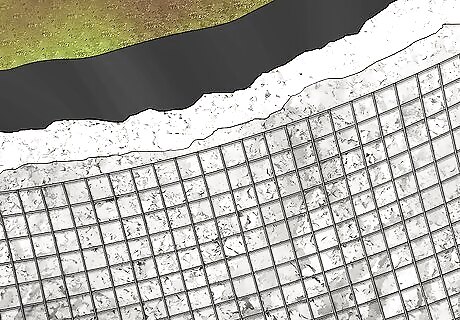
Press chicken wire mesh into the wet concrete. Use 2 in (5.1 cm) chicken wire mesh. Push the wire mesh into the freshly poured concrete and overlap the wire anywhere that 2 pieces meet. You can get large rolls of galvanised steel chicken wire mesh at a home improvement center. The mesh will reinforce the concrete and help prevent cracking in the future. Measure the side slopes and the bottom of the pool with a measuring tape to figure out how much mesh you need to purchase to cover them.
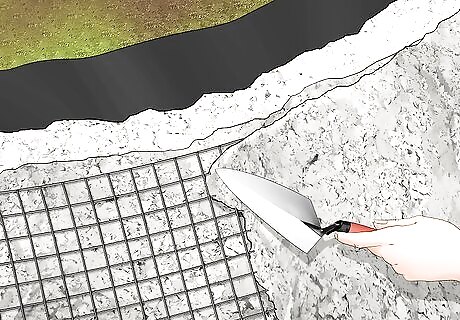
Cover the wire mesh with another layer of concrete and smooth it with a trowel. Pour or shovel another 2 in (5.1 cm) of concrete over the chicken wire. Use a hand trowel to smooth it out evenly. 2 in (5.1 cm) is the recommended thickness for the concrete so it holds up against cracking over time. Aim to have the concrete completely smoothed out within 2 hours, before it starts to get hard. You can use a rake or broom to spread out the concrete before you give it a smooth final finish with a trowel. Carry concrete into the pond with buckets and spread it out, working your way from the bottom to the top, if it is too deep to cover the whole sides with a rake or broom. This way you can cover smooth out any footprints as you make your way up towards the sides of the pond.
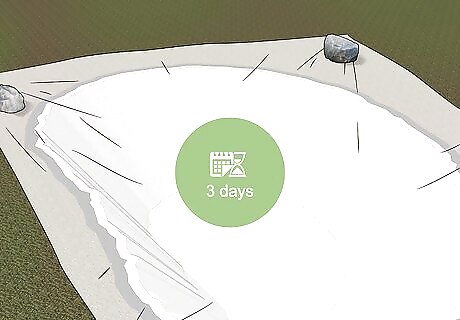
Cover the pond with plastic sheets and let it cure for 3 days. Spread out the sheets to cover the entire pond and anchor them down with rocks or other heavy objects. Let the concrete dry for 3 days until it is completely cured, and then remove the sheets. Once the pond is cured, you can install a pond filter system if you want to filter the water for swimming or for fish.
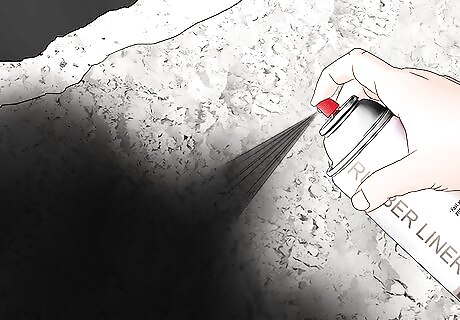
Spray on a rubber liner to seal the pond if you are using it for fish. Use a dark-colored rubber liner, hold the can 6 in (15 cm) from the concrete, and spray it on from top to bottom. The liner will seal out the lime in the concrete that is harmful to fish. You can also use a paint-on rubber liner instead of a spray-on liner. Dip a 4–6 in (10–15 cm) flat brush in the paint and work from top to bottom or left to right to coat the concrete.













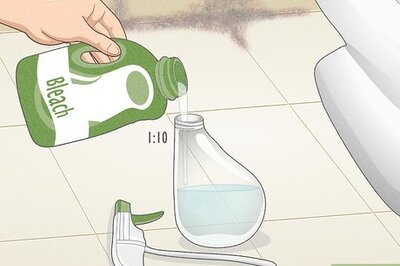




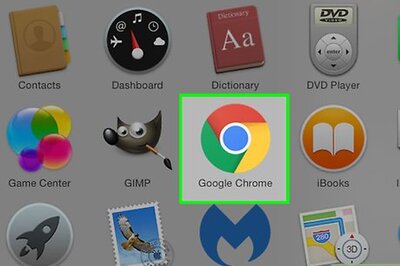

Comments
0 comment